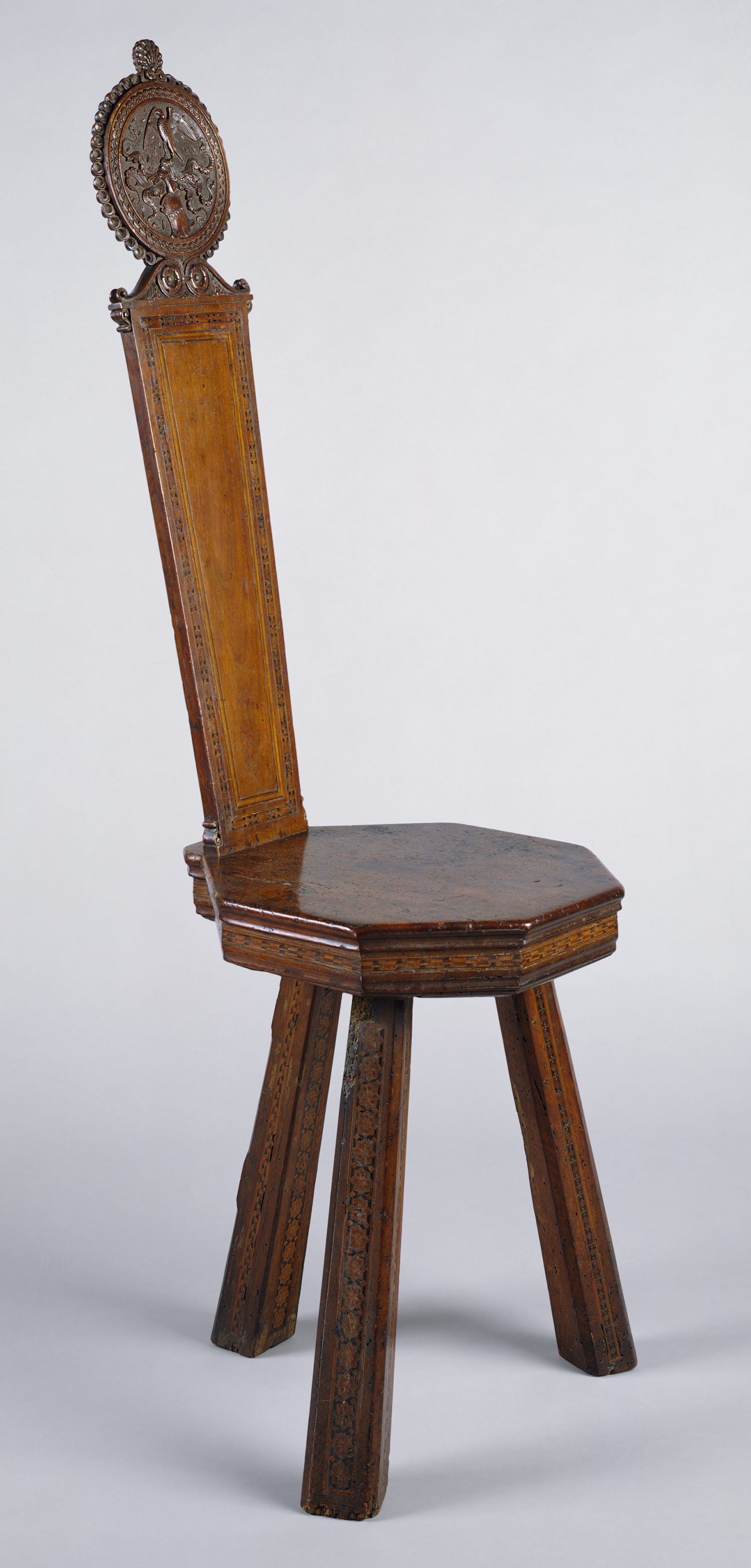The cassone, or marriage chest, was one of the most prized objects in any home and therefore no expense was spared in its beautification. The side panels were often covered with coloured or gilded gesso, built up into relief patterns or sculpted to depict Classical figures and scenes.
The best painters are sculpters in Italy were commissioned to work on these chests, and those that survive today exhibit a richness of decoration that is equalled only by the religious art of the day.
The increasing secularization of the arts now made it acceptable for people to display object with lavish surface decoration in their homes.

Decorative Work
Fitted furniture, often made from Walnut or Willow, was decorated with marquetry and inlays of ivory, stone or precious woods such as Ebony or ornate grotesque carvings. Grotesque ornament, the word derives from the Italian grottesco, sought to provoke a sense of uneasy fun by blurring the boundries between the natural and man made worlds.
A seat carved in the form of an open clam shell is both whimsical and unsettling. Decorated furniture was placed in equally decorative interiors, where walls also featured audacious trompe l'oeil designs that looked like windows, doors, shelves or vistas.
Architectural Influence
Renaissance art, like the Gothic style of the Middle Ages, was primarily led by developments in architecture, and the use of columns, a staple of Greek and Roman building, was now incorporated in antique furniture design.
Caryatids - columnar supports depicting female figures - were especially prevalent.
The chair, traditionally a symbol of status and power, underwent a process of democratization during the Renaissance that transformed it into an accessible staple of home life.
The faldstool, or X-chair, made from two pairs of short beams intersecting as a central joint and linked by a stretcher, became common.
The most luxurious examples of handmade furniture were covered with a thin layer of silver, or upholstered with velvet, but most of them were more modest. The basic form of the faldstool originated in antiquity, and a leather seat slung between two X-frames was used in Renaissance Italy just as it had been in ancient Greece.
A side chair called the sgabello chair was basically a stool with an octagonal seat and a long decorated back splat. Sometimes the back splat could be removed to turn the chair into a stool.

No comments:
Post a Comment